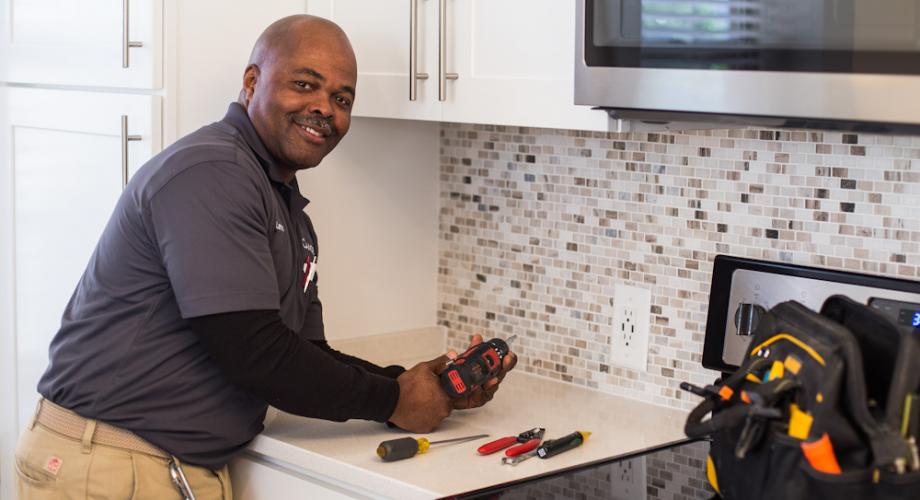
Real estate asset management focuses on minimizing risk while maximizing return on investment. Asset managers are able to provide firsthand information to investors on the factors that influence an asset's performance and take into consideration its entire lifecycle. They are also responsible for developing and executing economic strategies.
Asset managers have become more important as real estate has moved from individual ownership to institutional ownership. A typical property manager is an experienced professional with the asset class that he or she oversees. This includes market and portfolio optimization, data analysis, forecasting, as well as forecasting. Investing in real estate presents a host of challenges, requiring an understanding of legal and tax rules.
A business plan is developed to manage property assets and strategic asset improvements are made to increase their value. Asset managers keep a complete inventory of the property including rents, operating expenses, and any rights. These are important factors when deciding how to structure leases to attract tenants. An important step in a successful investment is to find a property manager.

An example of a business plan might include a local market study, an assessment on the future demand for the asset, an estimation about the cost of improving the property, and evaluating the possibilities for new management. Once the business plan has been developed, it can be used to generate steady cash flow and increase property value over time.
Real estate, unlike capital markets, is a more complex process than buying and managing properties. Asset managers have the ability to use their investor expertise to help investors invest in real property. Some asset managers conduct stress tests on investor portfolios.
Whether you are a passive investor or a large investor, it is important to have a professional real estate asset manager in your corner. A professional property manager will help you reach your goals and monitor your investments to give you peace of heart.
Asset managers should be able to integrate a presence on the ground into their investing efforts. This will allow them to provide regular updates, track data, make strategic decisions, and help improve the portfolio's overall performance. Additionally, they can advise investors on the most effective strategies for improving the value of their investments. The returns of your investment can be increased by up to 30% using the services of asset managers.

Asset management is not a new concept, but it has changed over the last 50 years. An asset manager is able to increase the investment portfolio's value while decreasing expenses. You can get firsthand information from them about market trends and factors.
Asset managers perform market research and budgeting. They also manage capital improvements and capital improvement projects. Asset managers are often responsible for managing up to eighteen to twelve properties. A portfolio manager might focus on a specific type or region depending on the size of your investments.
FAQ
Why hire a handyman when I can do it myself?
It saves you time and money to hire a handyman. Not only will you save time, but you also avoid the hassle of hiring another person. Hire a handyman to help you with your job.
Do I need a license in order to become handyman?
Most states don't require a license in order to be an independent contractor, as opposed to a salaried employee. You must still meet certain requirements.
-
Be at least 18 years old.
-
A high school diploma or GED is required.
-
A four-week course in a vocational school.
-
Complete a background check through your state's Department of Licensing.
-
Annual registration requires payment of $20
Also, you will need to obtain a business license and workers' compensation insurance.
Which is simpler: Contracting or being a handyman.
Because you only need tools and yourself, being a handyman is more time-consuming than contracting. It is important that you are able to manage your workload and work schedule. Contractors often rely heavily on subcontractors.
Is it better to pay a handyman on an hourly basis or per-project basis?
Personal preference will dictate the final price. To know the exact cost of a handyman's services, some prefer to pay by the hour. Some prefer to pay for each project, even though they may be doing multiple jobs at once. It doesn't matter which way you go, it works great.
Statistics
- With a strong housing market, the handyman and general maintenance worker industry are expected to grow by nearly 10% in the next decade. (housecallpro.com)
- “Before the pandemic, 40% of people asked how we could estimate a job when we weren't there,” Rose recalled. (inquirer.com)
- More than 20% of homes in America have outdoor living spaces, including decks and patios. (mrhandyman.com)
- An estimate was that in 2003, the market for home maintenance and repair spending was up 14% 2001 to 2003. (en.wikipedia.org)
- Our handyman services for seniors are provided by professional senior helpers who have been serving the community for over 20 years with 98% customer satisfaction. (cantatahomeservices.org)
External Links
How To
How to replace a broken window
Repairing broken windows is one the most common home improvement jobs. The job involves repairing the damage done to the glass in your home. The repair should take approximately 30 minutes. The problem is that you might end up with further damage to your home if the glass pane breaks. This article offers some useful tips to replace a broken window.
First, take the old glasses out of their frames
First, remove all screws that hold the glass in place. Then undo the lock at the top center of the bottom section of the window frame. Next, raise the window so it isn't attached to the sillplate (the metal strip below the floor). The last step is to gently loosen all remaining screws with a tool. After the panes are taken off, thoroughly clean them.
Next step: Clean the glass
Use a dry paper towel or cloth to remove any dirt from the glass. You can clean the glass with a spray bottle containing water and rubbing alcohol if there is any debris underneath.
Third Step: Reinstall the replacement glass
Attach the window panes to the frames. Use a screwdriver to push the outermost edge of your pane down. Gently push back the pane into place in the opening. Then move to the next pane, pushing it firmly against the previous pane before reattaching it. Continue inserting the panes till the window is complete. Use a silicone caulk gun to seal the space where the panes meet.
Fourth Step: Repair the area damaged
If you are installing new glass, be sure to inspect the area where the break occurred. This will help determine if further repairs are necessary. If the break occurred near the corner of the window, install two small pieces of wood along each side of the hole. These wooden blocks will strengthen the window while acting as spacers for the glass during expansion and contraction of the weatherproofing.
Fifth Step: Seal the repaired area
Apply silicone caulking around the edges of the frame after the glass has been replaced. This will create an excellent seal between the glass & the surrounding wallboard. You can purchase silicone caulking at hardware stores or online. Be sure to choose a color that matches the existing paint on the walls.
Finally, let the caulking cure overnight. You should not disturb the caulking after it has fully hardened. You could crack the caulking if you wait too long.